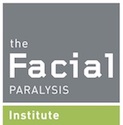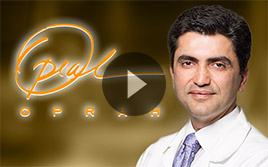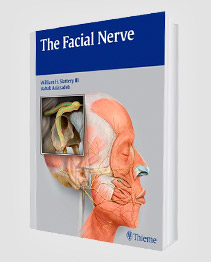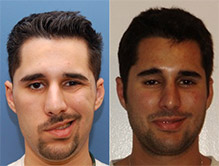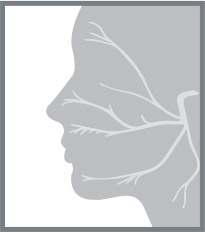The Anatomy of a Smile and Facial Synkinesis
Diagram of Facial Synkinesis
Take a look at the diagram below to learn about how facial synkinesis can affect key smile muscles:
The anatomy of facial expression is complex. But, Dr. Babak Azizzadeh of The Facial Paralysis Institute offers insights into facial muscle anatomy. That way, individuals can learn about facial synkinesis and other facial paralysis conditions. And, if necessary, anyone coping with these conditions can explore appropriate diagnosis and treatment.
Dr. Azizzadeh is a globally recognized facial plastic and reconstructive surgeon who understands all aspects of the anatomy of facial expression. He is happy to teach individuals about facial muscle anatomy, so they can identify and address facial paralysis symptoms in their early stages.
What Muscles Are Involved in the Anatomy of Facial Expression?
All facial expression muscles are located in subcutaneous tissue. When these muscles contract, they pull the facial skin. In doing so, the muscles enable people to frown, smile, and make other facial expressions.
The facial nerve, aka the seventh cranial nerve, innervates facial expression muscles. It features nerve fibers responsible for facial movement and expression. Also, it carries nerve fibers involved in taste and tear production.
Furthermore, the muscles responsible for facial expression can be divided into the following categories:
1. Orbital
Orbital facial muscles surround the eye sockets. People can use their orbital facial muscles to open and close the eyelids. The muscles also protect the cornea against dirt, debris, and other foreign particles.
2. Nasal
Nasal facial muscles help people move the nose. There are three nasal muscles in the face: the nasalis, procerus, and depressor septi nasi. The nasalis is the largest of the nasal facial muscles and begins at the maxilla (bone that forms the upper jaw). Comparatively, the procerus originates from the nasal bone and can be used to wrinkle the nose. Meanwhile, the depressor septi nasi connects the maxilla to the nasal septum.
3. Oral
Oral facial muscles support movement of the mouth and lips. Therefore, they are paramount for people who want to talk, whistle, sing, or perform any other mouth or lip movements required for verbal communication.
Problems with any of the aforementioned muscles can have far-flung effects on an individual’s facial nerve anatomy. If facial nerve damage occurs, an individual may experience synkinesis or other forms of facial paralysis. At this point, an individual can explore facial paralysis treatment options.
How to Treat Facial Nerve Anatomy Paralysis
Dr. Azizzadeh offers comprehensive treatment options for patients coping with facial nerve paralysis. He can meet with a patient to conduct a full assessment into their facial paralysis symptoms. From here, Dr. Azizzadeh can identify the facial paralysis cause and treat it accordingly.
There can be instances in which Dr. Azizzadeh recommends Botox or other non-surgical treatments for facial paralysis. Or, he may recommend selective neurolysis or other surgical procedures. Regardless, Dr. Azizzadeh tailors every facial nerve anatomy procedure to his patient. He ensures that his patient receives ongoing support, so he or she can achieve long-term symptomatic relief.
Learn More About the Anatomy of Facial Expression
For those who are coping with facial paralysis symptoms, Dr. Azizzadeh can help. Dr. Azizzadeh can conduct an evaluation of a patient’s facial muscle anatomy and review treatment options. To learn more or request a consultation with Dr. Azizzadeh, please contact us online or call us today at (310) 872-1620.
Request your consultation with Dr. Azizzadeh today
Call us at (310) 657-2203 to schedule an appointment.
Schedule a Consultation